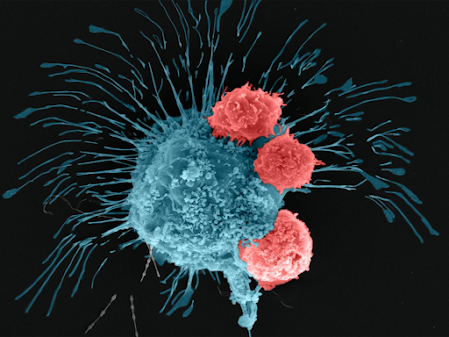In a ground-breaking investigation to better comprehend the illness that is one of the leading causes of mortality worldwide, researchers at PennState University successfully 3D bioprinted breast cancer tumors and treated them. The accomplishment, a first in science, paves the way for the accurate manufacture of tumor models. The invention will make it possible to research and create anti-cancer treatments in the future without using in vivo or in-animal experimentation.
Image credits: Pennstate
How did scientists do this?
The scientists employed doxorubicin, a chemotherapeutic medication used to treat breast cancer, to validate the accuracy of its tumor model. The researchers worked with Dr. Derya Unutmaz, an immunologist at Jackson Laboratory, to evaluate a cell-based immunotherapeutic treatment on the tumor after discovering the bioprinted tumor reacted to chemotherapy.
CAR-T cells or Chimeric antigen receptor T cells are T immune cells that have been genetically engineered to produce an artificial T cell receptor for use in immunotherapy. Here, human CAR-T cells had been modified through gene editing and were employed by the researchers to identify and combat an aggressive subtype of breast cancer cells. The researchers discovered that the cells within the bioprinted tumor had triggered a favorable immune response and were warding off the cancer cells after 72 hours of the modified CAR-T cells circulated within the tumor.
Image credits: Pixabay
What are the difficulties they faced?
Ibrahim Ozbolat, a professor of engineering science and mechanics, biomedical engineering, and the study’s principal author, said the team had created a simple human body model using human cells as the building blocks. Despite considerable improvements in cancer treatment, there aren’t enough pre-clinical platforms for studying potential anticancer medicines. According to the study, the necessity of clinical research to determine the effectiveness of drugs ultimately restricts the successful clinical implementation of anti-cancer medications. The development of bioprinted models might open the door to totally new ways of understanding the tumor microenvironment and the immune response.
According to Ozbolat, “Immunotherapy has already been shown to be a promising treatment for hematologic malignancies. In essence, the patient’s immune cells are drawn out, gene-edited to be cytotoxic for cancer cells, and then put back into the patient’s bloodstream. Because the changed cells must be transported throughout the body, circulation is essential. Since cancers lack efficient circulation, we developed our model to help us understand how tumors react to immunotherapy.”
How can this study help?
This study will enable us to understand the relationship between solid tumors and human immune cells. They have created a tool that functions as a clinical test platform to accurately and safely evaluate new medicines, also it serves as a study platform for immunologists to deeply understand how the tumor develops, how it communicates with human cells, and how it spreads and travels throughout the body.
Currently, Ozbolat and his associates are using tumors that were expelled from real breast cancer patients. To see how immunotherapeutics affect patient-derived malignancies, researchers will administer them. This is a crucial step in comprehending the complexities of the illness, which is necessary if we’re going to create novel medications and tailored cancer treatments.
The research was published in the journal Advanced Functional Materials.
To ‘science-up’ your social media feed, follow us on Facebook, Twitter, or Instagram!
Follow us on Medium!





1 comment
[…] “Small molecule therapies” is actually a very wide umbrella term that includes typical cancer treatments. Older, more classical small molecule treatments include chemotherapies, which are very toxic to […]